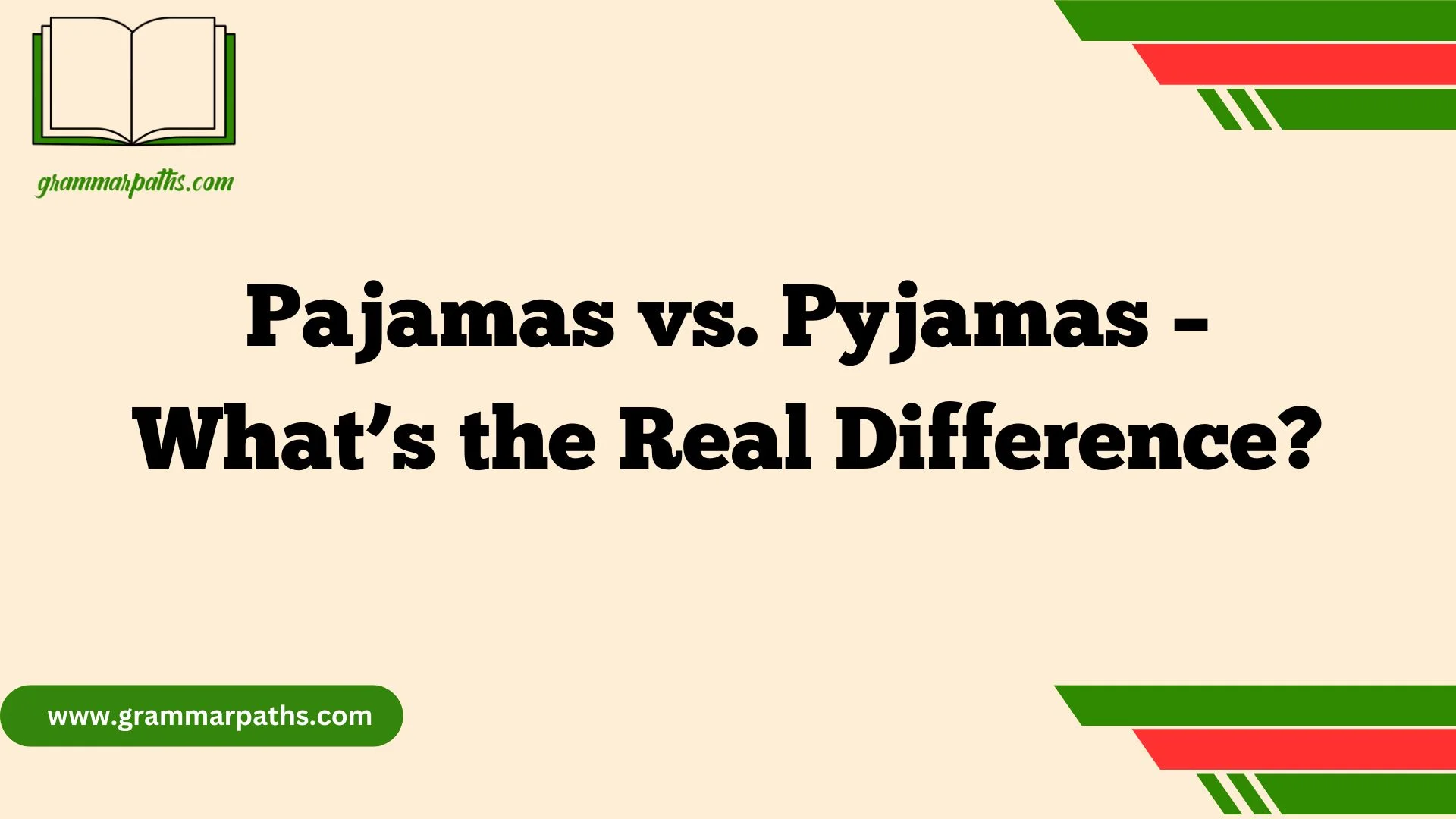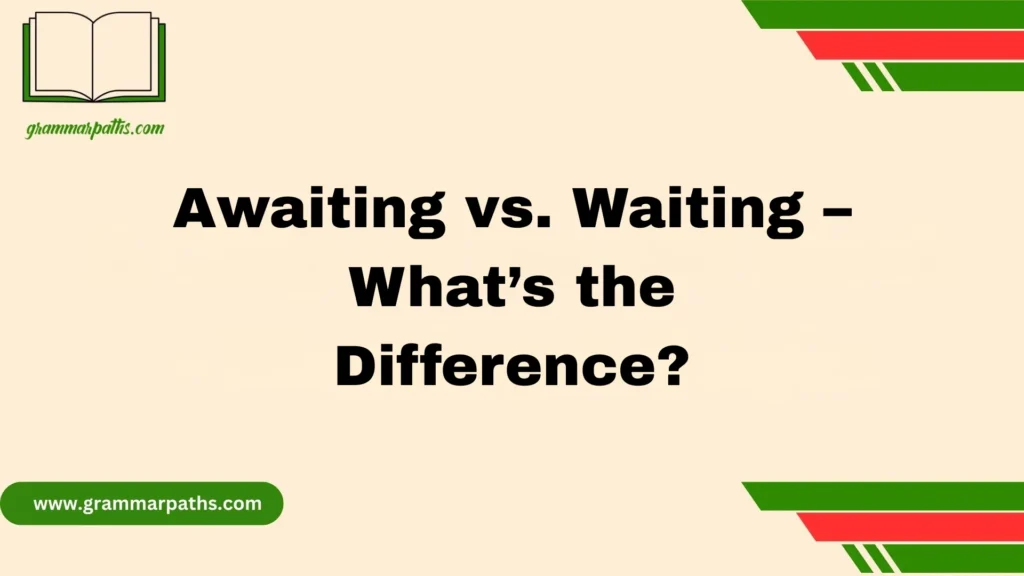When it comes to cozy nightwear, the only thing more comfortable than slipping into a pair might be deciding how to spell it — “Pajamas” vs. “Pyjamas”. This common confusion highlights a fascinating example of British vs. American spelling. In the United States, the term is spelled “pajamas”, while in British English—including regions like the UK, India, Australia, and South Africa—the word is often written as “pyjamas.” Despite the slight difference in spelling, both refer to the same piece of clothing worn for sleeping or lounging. The origin of the word traces back to the Urdu and Persian term “pāy-jāma,” meaning “leg garment”, which was adopted into English during the British colonial era in India. Today, the difference is more about linguistic tradition than meaning.
Modern users frequently search for terms like “what’s the difference between pajamas and pyjamas”, or “which one is correct.” And the truth is—both are correct, depending on where you live or write. Understanding these subtle language variations is crucial not only for daily communication but also for content creators, bloggers, and global businesses trying to localize content. For example, an e-commerce site targeting customers in London might prefer “pyjamas,” while one selling in New York should use “pajamas.” Writers and editors are often looking to ensure consistency, especially when dealing with style guides like AP (American Press) or Oxford (British). Whether you’re writing a blog, shopping for sleepwear, or teaching English, knowing the correct regional spelling matters. And at the end of the day, pajamas and pyjamas are just two sides of the same cozy coin.
What Do Pajamas (or Pyjamas) Actually Mean?
At its core, pajamas (or pyjamas) refer to a set of loose-fitting clothes worn mainly for sleeping or lounging. Usually, these consist of a top and matching trousers. The key idea is comfort, helping you relax and rest peacefully.
People often say “a pair of pajamas” since the garment usually consists of two pieces. Though they started as nightwear, pajamas now frequently double as loungewear or casual home clothes. From silk pajamas to cozy flannel sets, their style varies vastly worldwide.
Here’s a quick summary of the term’s meaning:
- Function: Sleepwear and loungewear
- Composition: Typically two-piece set (shirt and pants)
- Material: Varies from cotton, silk, flannel to synthetic blends
- Purpose: Comfort and relaxation during rest or casual homewear
Pajamas vs. Pyjamas – Spelling Explained
The simplest way to understand the spelling difference is geography.
| Spelling | Region(s) Where Commonly Used |
| Pajamas | United States, Canada (mostly) |
| Pyjamas | United Kingdom, Australia, India, South Africa, New Zealand |
This split mirrors broader American and British English spelling preferences. The American form pajamas dropped the “y” for simplicity, reflecting Noah Webster’s spelling reforms in the 19th century, which aimed to simplify English spellings.
British English, meanwhile, kept the pyjamas spelling, consistent with its older ties to French and other European influences. Both spellings are correct; which one you use depends largely on your audience.
Etymology and Global Origins of the Word
The word’s roots stretch far beyond English shores. Pajamas come from the Persian-Urdu phrase pāy-jāma (پاجامہ), where:
- Pāy means “leg”
- Jāma means “garment” or “cloth”
Originally, these were loose trousers tied at the waist, worn in South and Central Asia for comfort in hot climates.
The British Empire brought the concept—and the word—back from India during the colonial period. By the late 18th century, pajamas entered English usage, evolving from practical trousers to nightwear in Western culture.
The shift from “trousers” to “sleepwear” started in the early 20th century, influenced by rising awareness of hygiene and comfort in home life. The word’s journey tells a story of cultural exchange, adaptation, and linguistic evolution.
Usage Examples in Real Life
Across the world, pajamas and pyjamas appear in everyday conversation, literature, and media. Here are examples showing how each spelling naturally fits its cultural context.
American English Examples
- “I bought new pajamas for the winter.”
- “The kids stayed up late in their favorite pajamas.”
- Movie tagline: “Pajamas and pancakes – the perfect Sunday.”
British English Examples
- “She slipped into her cozy pyjamas before bed.”
- “Pyjama day at school is always fun!”
- Book title: The Boy in the Striped Pyjamas by John Boyne
These examples highlight how each spelling integrates seamlessly into local vernacular and popular culture.
Global Spelling Preferences – Who Uses What?
Here’s a handy table showing the common spelling choices in various English-speaking countries:
| Country | Preferred Spelling | Notes |
| United States | Pajamas | Almost exclusive use |
| United Kingdom | Pyjamas | Standard British English |
| Canada | Pajamas | Mostly American influence |
| Australia | Pyjamas | British-rooted spelling |
| India | Pyjamas | British English legacy |
| South Africa | Pyjamas | British English influence |
| New Zealand | Pyjamas | British English influence |
In digital communications, social media often blurs these lines, but traditional spelling still holds strong in formal writing.
Cultural & Linguistic Influences on Spelling
Language rarely evolves in isolation. The colonial spread of English amplified regional influences on spelling and pronunciation.
- Colonial India adopted the British “pyjamas,” embedding it in education and administration.
- South Africa, Australia, and New Zealand carry strong British linguistic legacies, reflecting in spelling choices.
- Canada, geographically close to the US, favors the Americanized “pajamas,” especially in media and advertising.
Today, these spelling differences reflect broader histories of migration, cultural identity, and globalization. The ongoing mingling of cultures sometimes leads to hybrid spellings in informal contexts but formal writing still respects tradition.
French and Other Language Influences
French language has its own version: pyjama (singular) and pyjamas (plural), pronounced pee-zha-ma. This French form influenced British English spelling, especially during periods of Norman influence and linguistic exchange.
Other European languages—like German, Spanish, and Dutch—borrowed the word, adapting spelling and pronunciation to fit their phonetics.
| Language | Word for Pajamas/Pyjamas | Notes |
| French | Pyjama(s) | Singular and plural forms |
| German | Pyjama(s) | Adopted from French/English |
| Spanish | Pijama(s) | Similar pronunciation |
| Dutch | Pyjama(s) | Retains “y” like British English |
These influences highlight the rich tapestry of European language exchange surrounding this simple sleepwear word.
Colloquial Terms & Slang Around Pajamas
Pajamas inspire plenty of fun nicknames and informal terms. Here are some popular ones:
- PJs – The most common shorthand, used worldwide
- Jammies/Jammies – Friendly, playful term, often for kids
- Jim-jams – Older slang, sometimes used humorously
- Nightwear – More formal, general term
- Sleepwear – Industry term covering pajamas, nightgowns, and more
In the U.S., parents might say, “Time to put on your jammies,” while Brits might say, “Slip into your pyjamas.” These colloquialisms enrich the everyday language around sleepwear.
Pajamas/Pyjamas in Media and Literature
Media often reflects or even shapes spelling preferences. The choice between pajamas and pyjamas signals cultural identity and audience targeting.
Iconic Appearances
- The Boy in the Striped Pyjamas (John Boyne, 2006) uses the British spelling, signaling its UK origin and setting.
- Pajama Party (American 1960s film) embraces the US spelling and youth culture vibes.
- Cartoons and children’s shows often use “PJs” as a fun catch-all term, e.g., PJ Masks.
Marketing and Branding
Many companies carefully choose spelling based on target markets:
- A US brand selling sleepwear uses pajamas for its website and packaging.
- A UK-based retailer promotes pyjamas to connect authentically with local shoppers.
These choices affect search engine optimization (SEO) and customer perception.
Visual Summary: Pajamas vs Pyjamas by Country
| Country | Spelling | Percentage Usage* |
| United States | Pajamas | 98% |
| Canada | Pajamas | 75% |
| United Kingdom | Pyjamas | 95% |
| Australia | Pyjamas | 90% |
| India | Pyjamas | 85% |
| South Africa | Pyjamas | 80% |
| New Zealand | Pyjamas | 88% |
*Approximate based on language corpora and digital text analysis.
Fun Quote to Remember
“When in doubt, put on your pajamas — or your pyjamas — and get some rest. The spelling can wait, but comfort can’t.”
Ready to pick your spelling confidently? Whether you write pajamas or pyjamas, now you carry a piece of linguistic history with you — one cozy step at a time.
Conclusion:
At the end of the day, whether you prefer “pajamas” or “pyjamas”, you’re still talking about the same comfortable sleepwear. The difference in spelling simply reflects a broader distinction between American English and British English—nothing more, nothing less. In the United States and Canada, you’ll most commonly see “pajamas,” while in the UK, Australia, India, and other Commonwealth countries, “pyjamas” is the go-to spelling.
So, if you’re a writer, student, brand, or shopper wondering which version is correct—the answer lies in your audience’s location. For global communication, it’s helpful to recognize both spellings. And if you’re optimizing content for SEO or running a fashion or sleepwear blog, using the right regional keyword (either “pajamas” or “pyjamas”) can improve visibility and connect with your readers better. No matter how you spell it, one thing’s for sure: good pajamas—or pyjamas—make for a great night’s sleep.
FAQS:
Which is correct, pajamas or pyjamas?
Both are correct—”pajamas” is American English, while “pyjamas” is British English. The spelling depends on regional usage.
Is it pyjama or pajama in Canada?
Canada uses both, but “pyjamas” is slightly more common due to British influence in Canadian English.
Is it pyjama or pajama Australia?
In Australia, “pyjama” is the preferred spelling, following British English conventions.
What do British call pajamas?
The British call them “pyjamas”, sticking to their traditional spelling with a “y.”
How do Americans say pajamas?
Americans say “pajamas” and typically pronounce it puh-JAH-muhz or puh-JAM-uhz, depending on the region.

Emma Brooke is a passionate language expert and contributor at GrammarPaths.com, where she helps learners navigate the complexities of English grammar, idioms, and effective writing. With a strong academic background and years of teaching experience, Emma excels at turning tricky grammar rules into simple, practical lessons that readers can easily grasp.










